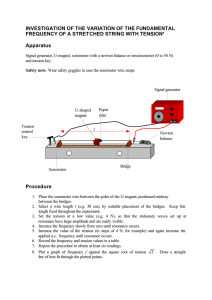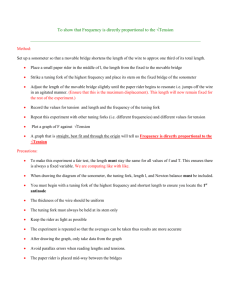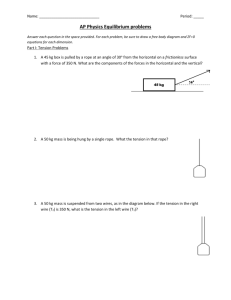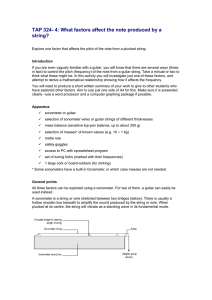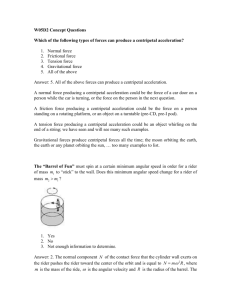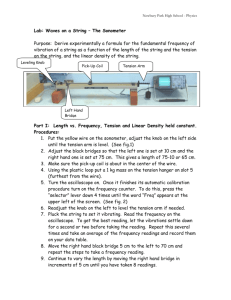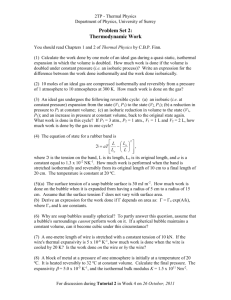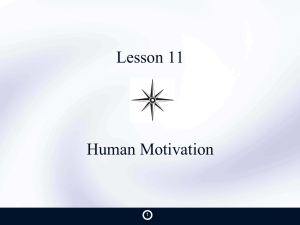Stretched String Experiments: Frequency, Length, Tension
advertisement
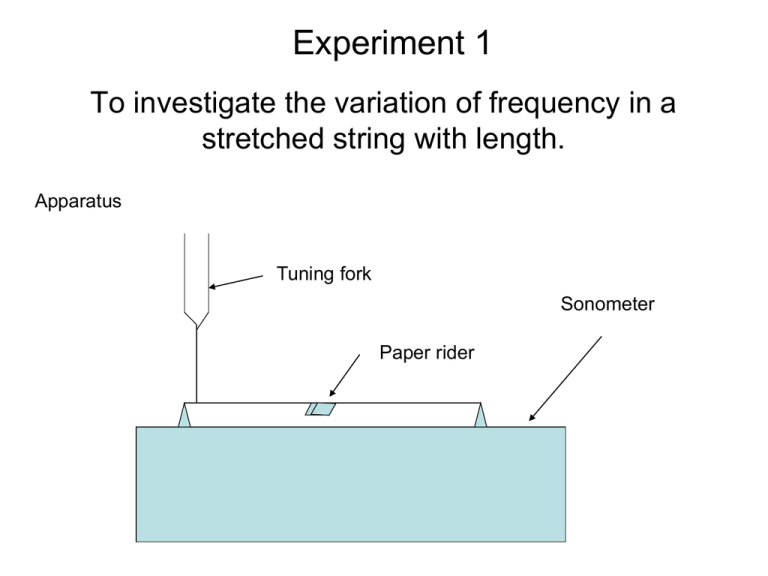
Experiment 1 To investigate the variation of frequency in a stretched string with length. Apparatus Tuning fork Sonometer Paper rider Method • Leaving the tension unchanged, place a paper rider on the centre of the wire. • Strike a tuning fork and touch the wire at a bridge. • Move the other bridge until the paper rider falls off. • Note the frequency on the fork and the length between the bridges. The Results • Plot a graph of frequency against 1/length. • The graph is a straight line through the origin showing that frequency is inversely proportional to length. Frequency Hz Length m 256 288 320 341.3 384 480 0.57 0.499 0.449 0.424 0.377 0.305 1/length Precautions 1. Place the paper rider in the centre of the wire. 2. Keep the tension fixed as there can only be 2 variables. A wee sum on the experiment The tension on the string is 38N. 1. From the graph find the length that has a fundamental frequency of 300Hz. 2. Find the mass of this length of wire. Experiment 2 To investigate the variation of frequency in a stretched string with tension. Apparatus Newton balance Tuning fork Sonometer Paper rider Method • Leaving the length unchanged, place a paper rider on the centre of the wire. • Strike a tuning fork and touch the wire at a bridge. • Use the key to adjust the tension until the paper rider falls off. • Note the frequency on the fork and the tension on the newton balance. The Results • Plot a graph of frequency against Tension • The graph is a straight line through the origin showing that frequency is proportional to the root of the tension. Frequency Hz Tension N Tension Precautions 1. Place the paper rider in the centre of the wire. 2. Keep the length fixed as there can only be 2 variables.
